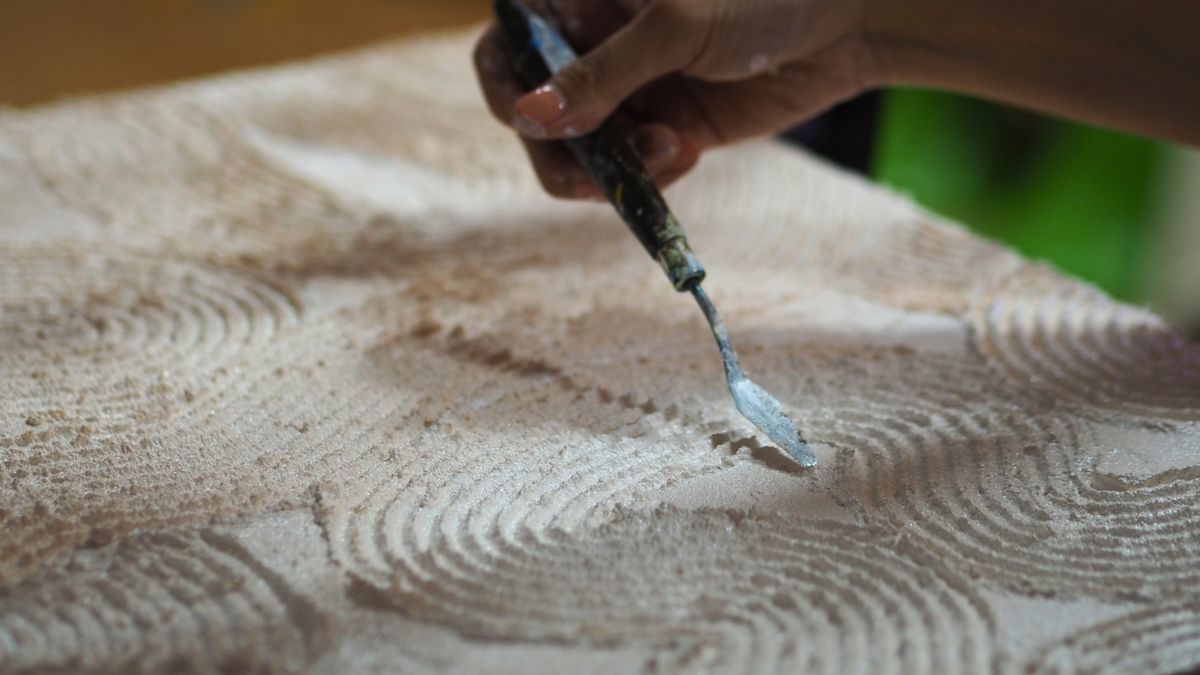
Textured acrylic art involves using various mediums and techniques to create depth and tactile surfaces. Here are some common types of mediums and tools used in textured acrylic art:
1. Acrylic Gel Medium
- Description: Gel medium is mixed with acrylic paint to thicken it, allowing for more textured and dimensional applications. It comes in different consistencies (soft, regular, heavy).
- Best For: Achieving a glossy, thick texture while maintaining color vibrancy.

2. Modeling Paste
- Description: A thick, paste-like medium that can be applied to create heavy texture on the canvas. It can be mixed with paint or applied first and then painted over.
- Best For: Building up large, sculptural areas, or creating raised surfaces.
3. Texture Paste
- Description: Similar to modeling paste but often lighter and with a smoother finish. It’s used to create fine textures and can be sanded down after drying.
- Best For: Creating subtle textures and intricate details.
4. Textured Gels (e.g., Sand Gel, Glass Bead Gel)
- Description: These gels are infused with materials like sand, glass beads, or pumice, adding unique textures when mixed with paint.
- Best For: Adding gritty, granular, or bumpy textures to your artwork.

5. Palette Knives
- Description: While not a medium, palette knives are essential for applying thick layers of paint and creating sharp, textured patterns.
- Best For: Creating impasto effects and abstract textures.
6. Acrylic Molding Paste
- Description: A dense medium that adds a sculptural element to acrylic paintings. It dries to a hard, durable finish and can be carved or sanded.
- Best For: Creating heavy texture and sculpted forms on the canvas.
7. Acrylic Fiber Paste
- Description: Contains fiber particles that create a rough, fibrous texture when applied. It can be painted over once dry.
- Best For: Adding organic textures that resemble fabric or paper.
8. Acrylic Glazing Liquid
- Description: A fluid medium that can be used to create layers of transparent or translucent textures. It’s less about building up physical texture and more about creating visual depth.
- Best For: Creating subtle, layered effects with a smooth finish.
9. Heavy Body Acrylics
- Description: These are thicker acrylic paints that hold their shape well and are perfect for creating textured surfaces without the need for additional mediums.
- Best For: Achieving thick, impasto-like textures directly from the paint tube.
10. Acrylic Crackle Paste
- Description: This medium creates a crackled surface as it dries, adding an aged, weathered texture to your artwork.
- Best For: Creating an antique or distressed look in textured art.

11. Acrylic String Gel
- Description: A fluid medium that can be poured or drizzled to create string-like textures and patterns.
- Best For: Adding intricate, fine lines and stringy textures.
12. Natural Materials (e.g., Sand, Fabric, Paper)
- Description: Incorporating materials like sand, fabric, or torn paper into your acrylic work adds physical texture and unique visual interest.
- Best For: Mixed media projects and creating a layered, tactile effect.
These mediums can be used individually or combined to create a variety of textures in your acrylic artwork. Depending on the desired effect, you can experiment with different tools like brushes, palette knives, and sponges to manipulate the texture further.
